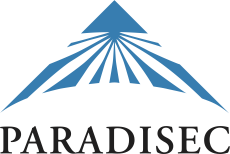How to recognise the value of a collection of language documentation material
Archiving a collection is a good first step towards establishing it as a citable object that can be referred to in research and can be used by others for new research. An archive will provide persistence for the data, and will assign persistent identifiers (handles or digital object identifiers).
Suitably crafted collections can be used in promotion and tenure applications and should be cited in a CV as one of your outputs. But such a collection must be archived.
We are still developing metrics for assessing the value of a collection relative to a journal article or a monograph. One way of doing this is by writing a guide to the collection (e.g., this guide to Nafsan material) or to write a collection review (as for example, published by Language Documentation & Conservation) which guides the reader through the collection and what it contains (see the reviews of the Ticuna or Northern Ambrym collections).
This article in the Australian Journal of Linguistics sets out criteria that can be used for determining the value of a collection and is a good guide to how to establish metrics: Nick Thieberger, Anna Margetts, Stephen Morey, Simon Musgrave. 2016. Assessing annotated corpora as research output. Australian Journal of Linguistics. Vol 36: 1, 1-21 (Available here)
